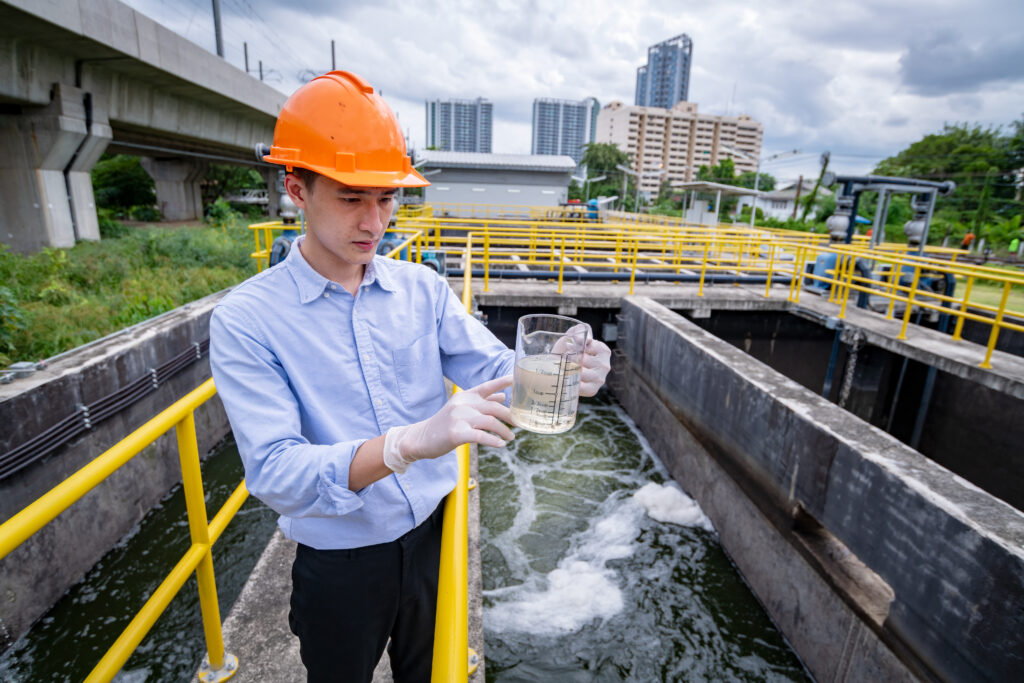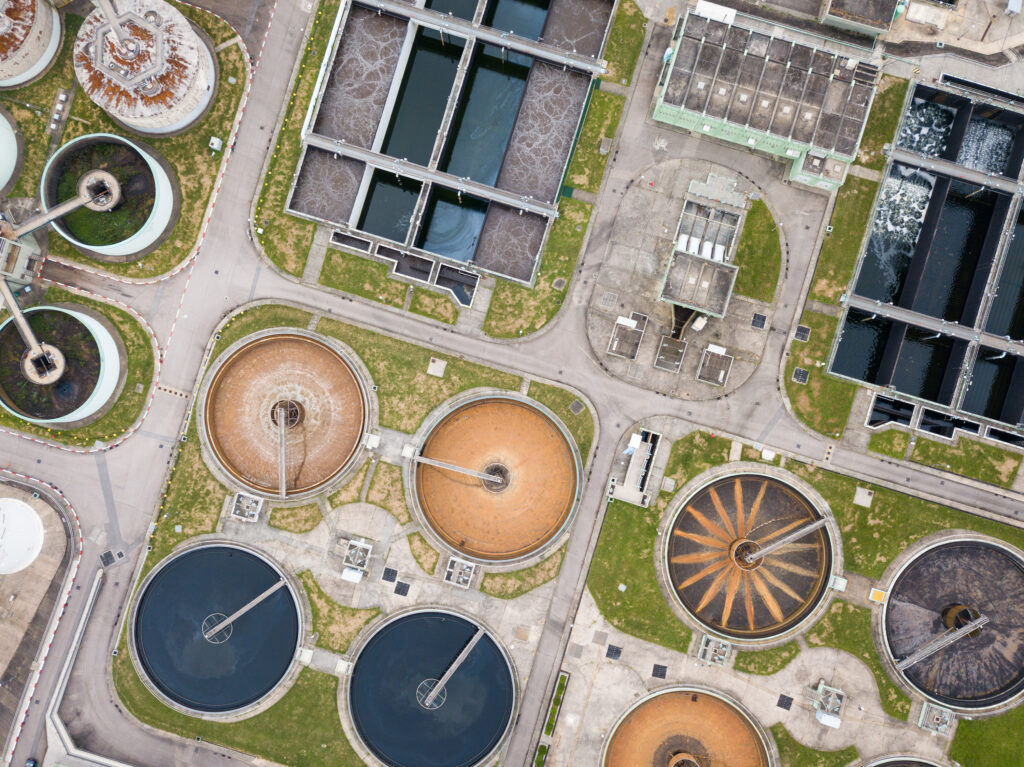Removal of harmful contaminants
Wastewater Treatment Approaches
Wastewater from both public and trade effluent must be treated in order that harmful contaminants and pollutants are removed before being returned to water sources such as rivers, streams and seas. Those involved in the industry will be familiar with both the aerobic and anaerobic approaches to wastewater treatment. In this explainer article, we walk through the differences, benefits and disadvantages of each methodology.

INTRODUCTION
The Phases of Wastewater Treatment
Typically Three Phases
Wastewater treatment is typically split into three phases: primary, secondary and tertiary. During the primary phase, solids are usually removed by mechanical filtering or settling methods. Following this, the secondary phase uses micro-organisms to remove harmful organic matter. A final (or tertiary) phase is dependent on the final destination of the treated water.
Secondary Phase of Wastewater Treatment
Micro-organisms break down unwanted organic matter
Aerobic and anaerobic wastewater treatment both use micro-organisms to break down unwanted organic matter during the secondary phase of wastewater treatment. As the names may suggest, the key difference is that anaerobic wastewater treatment does not use oxygen during the process, whereas aerobic wastewater treatment relies on the supply of oxygen within the process. The approach chosen will depend on the effluent and its intended discharge – as the by-products from each process will differ depending on the treatment chosen.
The choice of secondary wastewater treatment phase depends on a number of factors, including:
- The composition and microbial concentration of the water
- The COD/BOD demand
- Time/energy/financial constraints
- Maintenance/operational constraints
- The intended use/location of the treated water
It is worth noting that a combination of both approaches can also be used if suitable to requirements and conditions.
INTRODUCTION TO AEROBIC TREATMENT APPROACH
What is Aerobic Wastewater treatment?
Oxygen-feeding bacteria decompose unwanted contaminants
Aerobic wastewater treatment systems use oxygen-feeding microbes to help decompose unwanted organic contaminants within the effluent. Conditions are optimised for these oxygen-loving, helpful bacteria to multiply in an activated sludge, before they are added to the sewage to break down pollutants such as nitrogen and phosphorous into harmless elements such as CO2 and water.
Oxygen is introduced into the water through methods such as the use of tanks with mechanical aeration devices or the construction of wastewater ponds, which create larger surface areas for air to reach the effluent. Oxygen levels must be monitored in conjunction with the composition and levels of microbes within the wastewater, as well as the volume of flow. The management of an aerobic wastewater treatment system can be very intricate, with consideration of flow volume/composition, temperature, microbial levels, pH and oxygen all being constantly monitored and adjusted.
Types of aerobic wastewater treatment systems include:
- Activated sludge
- Fixed Bed Bioreactors (FBBRs)
- Membrane Bioreactors (MBRs)
- Moving Bed Bioreactors (MBBRs)
- Biological trickling filters

Advantages & Disadvantages of Aerobic Wastewater Treatment
Aerobic wastewater treatment is typically used with wastewater with lower BOD/COD demand of less than 1000 mg/L, when oxygen is required for successful treatment. It has a number of positive characteristics in its use and application:
- It is less odorous, as it does not produce the same foul-smelling by-product gases during the process that are typically seen with anaerobic wastewater treatment (e.g. hydrogen sulphide and methane)
- Treated water can more often be discharged directly into the environment due to the efficiency of nutrient removal
- There is good stability within the processes used
- Higher effluent quality
Disadvantages of Aerobic Wastewater Systems include:
- Large spaces or high levels of energy required to enable oxygen to be introduced into the wastewater, giving higher set-up and running costs in comparison to an anaerobic approach
- The microbes used may not digest all of the solid waste, meaning it must settle out as biosolids and further treatment may have to be introduced prior to discharge
- Higher nutrient requirements and sludge yields
INTRODUCTION TO AnaEROBIC TREATMENT APPROACH
What is Anaerobic Wastewater treatment?
Bacteria break down organic pollutants without need for oxygen
Anaerobic wastewater treatment uses micro-organisms that do not need oxygen to break down organic pollutants, instead using the oxides already found within the system/organic matter. Across multiple bioreactor stages – including acidification and methane production phases – the bacteria break down the contaminants into biogases (methane, carbon dioxide) and biomass (digestate).
Types of anaerobic wastewater treatment systems include:
- Lagoons
- Filter reactors
- Sludge blanket reactors

Advantages & Disadvantages of Anaerobic Wastewater Treatment
Typically used in wastewater with higher BOD/COD demand of greater than 4000 mg/L, in recent years there has been an increase in the usage of anaerobic wastewater treatment. There are various advantages in its use:
- Fewer nutrients required due to lower biomass production
- Lower energy costs for set-up and operation
- Production of biogas as end by-product can be used as alternative fuel source
- Lower biomass generation means lower costs for sludge treatment and disposal
- Requires less space than aerobic systems
Disadvantages of Aerobic Wastewater Systems include:
- Could require further aerobic treatment of wastewater to meet discharge requirement
- More sensitive to lower temperatures and impact on reaction rates
- Can produce unwanted odours and volatile organic acids/gases
- pH monitoring required
- Does not remove nitrogen and phosphorous
Choice of Secondary Wastewater Treatment
Dependent on a number of factors
Typically, wastewater with lower BOD/concentration of contaminants, lower temperatures and higher final output quality requirements will better suit an aerobic treatment approach, whereas those flows with a higher concentration of impurities and warmer temperatures would benefit from anaerobic treatment – however the choice of secondary wastewater treatment (aerobic or anaerobic) is dependent on a number of factors:
- Chemical and Biological oxygen demands (COD/BOD)
- Available space and time for set-up and water treatment
- Financial constraints
- Desired microbial concentration
- Destination of final discharge
- The composition of the initial wastewater